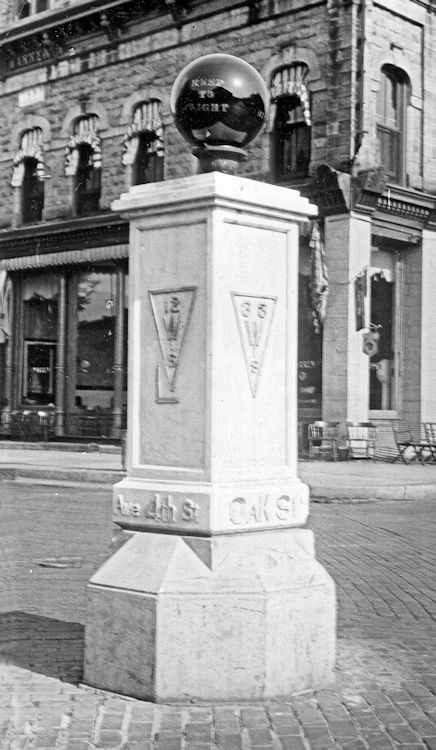Baraboo’s Silent Policeman
by Bill Schutte
Before the days of the horseless carriage, horse and buggy drivers pretty much drove where they pleased, obeying rudimentary traffic rules. Generally, horses would not run into each other, regardless of what kind of attention was being paid by their driver. There were no one-way streets around the turn of the 20th Century, and if everyone kept to the right, few problems developed.
However, with the advent of the newfangled gasoline-powered automobiles, which came upon the scene during the early 1900s, drivers, both horse and auto, would become much more aware of the problems which arose when they met.
Horse owners complained of the high speeds that autos drove–up to 20 miles per hour!–and the noisy engines, which scared their teams. To accommodate and protect the horse teams, proper etiquette dictated that cars must keep to the right of center, and not exceed a 6 mile per hour speed when turning street corners.
How far right, was right? Some vehicles would cut a corner, thereby getting into the oncoming lane, with potential diestrous results. Intersections were the worst, where four streets met. Few, if any, stop signs existed then, so who had the right-of-way?
Instead of having a traffic officer at each busy intersection directing traffic, the problem was solved with the installation of what was then called a “Silent Policeman”. It consisted of a cement pillar, about 5 feet high, usually with a shiny globe on top. The globe sometimes lit up at night for better visibility. It was understood that, upon entering an intersection, drivers must always keep to the right of the Silent Policeman. If one wished to make a 90 degree left-hand turn, the driver would have to turn right, circle the pillar and exit at the desired street. It was a type of “roundabout” commonly used in Europe at the time.


